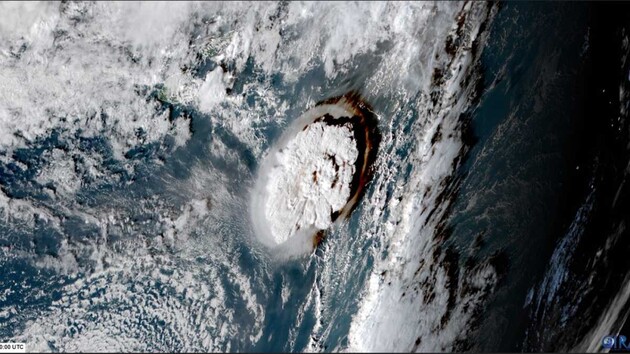However, the island itself did not last long.

In 2015, a new island appeared in the southern part of the Pacific Ocean, which opened up new opportunities for scientists. The appearance of a new island allows us to learn how ecosystems are born, starting with pioneer microbes that colonize new lands before the appearance of large animals and plants.
But as Science Alert points out, the island of Hunga-Tonga-Hunga-Haapai (Hunga -Tonga) was short-lived — after it was formed as a result of a volcanic eruption in 2015, it was almost completely destroyed by an eruption in early 2022.
Read also: Ancient microbes released climate changes on Mars that could not survive
But in seven years of his existence, he revealed several secrets. In a new study, scientists reported the unexpected appearance on the island of a community of microbes that metabolize sulfur and atmospheric gases. They are similar to organisms that inhabit completely different habitats: hot springs or deep-water hydrothermal vents.
“We did not see what we expected. We thought we would see organisms that you find when the glacier retreats, or cyanobacteria, which are more typical species of early colonizers, but instead we found a unique group of bacteria that metabolize sulfur and atmospheric gases,” said environmental microbiologist Nick Dragon from the University Colorado.
Dragon and his research colleagues collected 32 soil samples from the island, on the surface from sea level to the top of the crater, about 120 meters high. Then they extracted and sequenced the DNA from the samples.
Scientists note that the plants colonized the new island quite quickly, probably thanks to the transfer of seeds in bird droppings. But the researchers focused their attention on regions without vegetation.
They found bacteria and archaea in all their samples from the volcano's cone, although these microbes were less diverse than microbes from nearby vegetated areas and very different from each other. .
It would be expected if the first microbes appeared on the island from water or bird droppings, but it seems that the first colonies did not form there. Scientists suspect that the bacteria appeared deep underground.
“The microbes were most similar to those that live in hydrothermal vents, hot springs such as Yellowstone, and other volcanic systems. Our assumption is that the microbes came from such sources,” said Dragon.
Similar studies are also recognized as something unique. Strong eruptions happen often, but the development of an ecosystem on a completely new piece of land is very rare. Hunga-Tonga is only the third landmass that appeared above the water and existed for more than a year in the last 150 years. And the first in the tropics.
Related video
Earlier, scientists announced that the eruption of the underwater volcano Hunga-Tonga-Hunga-Haapai, which occurred in January last year, led to the fact that a huge amount of water entered the atmosphere . According to scientists, this may lead to the growth of the ozone hole in the coming years.



